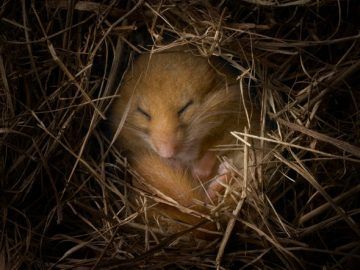Simon Makin in Scientific American:
 A well-worn science-fiction trope imagines space travelers going into suspended animation as they head into deep space. Closer to reality are actual efforts to slow biological processes to a fraction of their normal rate by replacing blood with ice-cold saline to prevent cell death in severe trauma. But saline transfusions or other exotic measures are not ideal for ratcheting down a body’s metabolism because they risk damaging tissue.
A well-worn science-fiction trope imagines space travelers going into suspended animation as they head into deep space. Closer to reality are actual efforts to slow biological processes to a fraction of their normal rate by replacing blood with ice-cold saline to prevent cell death in severe trauma. But saline transfusions or other exotic measures are not ideal for ratcheting down a body’s metabolism because they risk damaging tissue.
Coaxing an animal into low-power mode on its own is a better solution. For some animals, natural states of lowered body temperature are commonplace. Hibernation is the obvious example. When bears, bats or other animals hibernate, they experience multiple bouts of a low-metabolism state called torpor for days at a time, punctuated by occasional periods of higher arousal. Mice enter a state known as daily torpor, lasting only hours, to conserve energy when food is scarce.
The mechanisms that control torpor and other hypothermic states—in which body temperatures drop below 37 degrees Celsius—are largely unknown. Two independent studies published in Nature on Thursday identify neurons that induce such states in mice when they are stimulated. The work paves the way toward understanding how these conditions are initiated and controlled. It could also ultimately help find methods for inducing hypothermic states in humans that will prove useful in medical settings. And more speculatively, such methods might one day approximate the musings about suspended animation that turn up in the movies.
More here.
